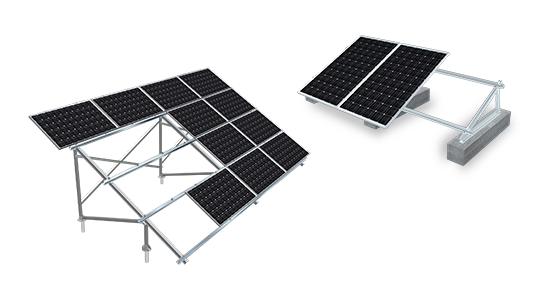Ballasted Solar Structure Features and Importance
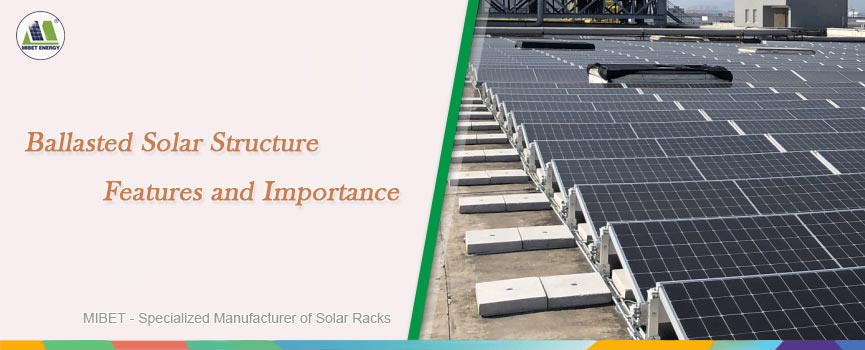
Solar energy is gaining traction as a key player in the quest for sustainable and clean electricity, with the demand for renewable sources continuously increasing. You've likely noticed the increasing adoption of solar panels by homeowners, businesses, and even government entities – all striving to reduce their environmental impact and reliance on traditional energy sources.
Panel mounting structures are essential components of solar installations, ensuring secure panel placement and optimal angling for maximum sunlight capture. Selecting the appropriate mounting system is crucial for long-term performance and energy generation. In this article, we will discuss ballasted solar panel structures, how their importance, and their features, such as easy installation and cost-effectiveness.
What Is a Ballasted Solar Mounting Structure?
Ballasted solar panel mounts offer a secure way to install photovoltaic panels on rooftops or ground surfaces without piercing the roof. These mounts use weights or heavy materials, like concrete blocks, to anchor and support the panels, avoiding the need for drilling or bolting, which simplifies the installation.
In solar PV installations, "ballasted" means the system is anchored using these heavy materials to ensure stability. These systems are particularly useful on flat roofs or where it's impractical to penetrate the roof.
Ballasted solar mounting systems come with a pre-set tilt, often no more than 10 degrees, to optimize solar energy capture and reduce shading from surrounding panels. This slight tilt also helps to improve the system's resistance to wind by lowering the wind's impact on the panels. After installation, these systems add a manageable weight of two to six pounds per square foot to the roof, which is typically within the load-bearing limits of contemporary roofing structures.
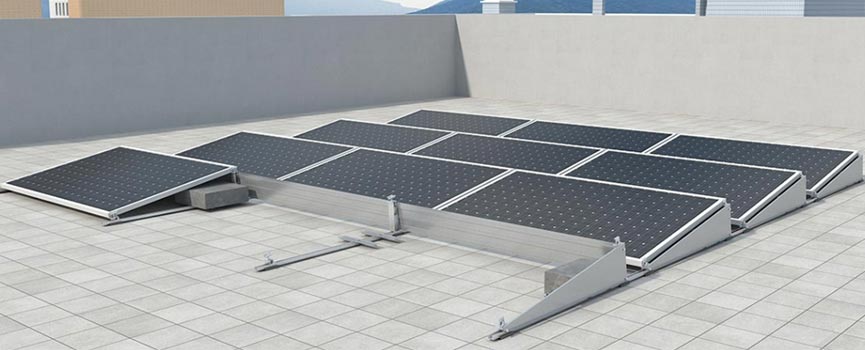
To learn more about our specialized ballasted solar systems, please click here.
The Importance of Ballasted Solar Panel Mounts
Ballasted mounting systems primarily provide stability and support for PV arrays. These ballasts are positioned around the solar panel array's edges to counteract wind forces and maintain stability. Installation involves placing the blocks evenly on the mounting structure surface to ensure balance. Proper weight distribution prevents the panels from moving or tipping, enhancing structural integrity and optimizing the system's angle towards the sun. This, in turn, contributes to improved energy output and overall performance.
Features of Ballasted Solar Structure
1. Streamlined Installation
You can install the ballasted system quickly and efficiently without the need for drilling, digging, or anchoring. Simply place the panels and racks on the chosen surface—be it roof or ground—and secure them using ballasts. This means lower labor and equipment costs, along with a quicker installation process. Furthermore, its flexibility allows for easy adjustments, removal, or relocation to suit your evolving needs.
2. Minimal Impact and Maintenance
Ballasted systems are noninvasive, avoiding any penetration of the installation surface, which minimizes risks like water leakage, corrosion, or structural damage. They offer added insulation and protection, enhancing energy efficiency by limiting heat transfer. Moreover, maintenance is also minimal, you only need to periodically check the ballast weights and alignments and keep the panels clean from dust and debris.
3. Optimal Performance and Adaptability
Ballasted systems allow you to optimize panel orientation and tilt for maximum solar energy capture. You can customize the layout to fit the available space and desired aesthetic, with the flexibility to accommodate various panel types, sizes, and shapes. Furthermore, these systems accommodate different panel types, sizes, and shapes, and can integrate additional features like skylights or vents for enhanced functionality.
4. Economical and Eco-friendly
Opting for a ballasted installation can be financially advantageous, reducing both initial and long-term costs associated with solar projects. It offers a quicker return on investment through higher energy production and cost savings. Additionally, the reduced resource consumption and waste generation contribute to a smaller carbon footprint and a more sustainable approach to solar energy. It also preserves the integrity of the installation surface, extending its lifespan and value.
Disadvantages of Ballasted Solar Structure
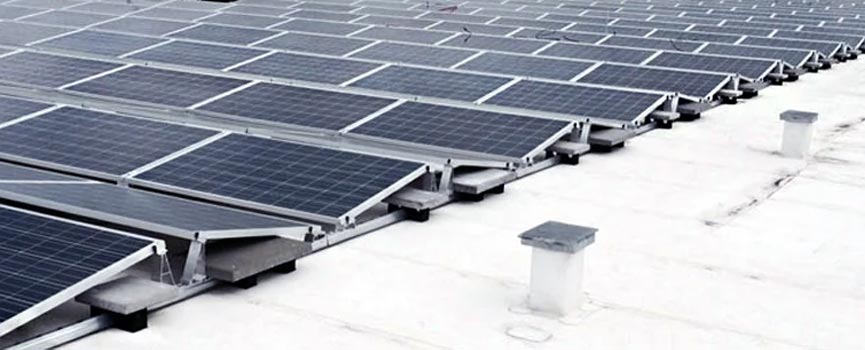
1. Weight and Stability
Ballasted mounts rely on weight for stability. This means careful attention must be paid to the weight limitations of each component and the overall structure. Incorrect assembly can lead to instability, especially under external pressures such as snow load. Understanding these limitations and adhering to proper assembly guidelines are essential for long-term system performance and safety.
2. Wind Uplift Concerns
Wind can pose a challenge for ballasted systems, particularly those with limited tilt angles. Uplift can occur, impacting system stability and potentially causing damage. Additionally, limited tilt options may lead to shading, reducing the panels' exposure to sunlight and impacting energy output. To address these concerns, consider solutions such as aerodynamic designs or wind deflectors. Integrating battery storage can further enhance energy independence, offering a reliable power source during inclement weather or grid outages.
3. Tilt Angle and Performance
Ballasted mounts often come with restricted tilt angle options. This can influence the system's weather resistance and energy production throughout the year. With limited adjustability, optimizing energy generation across different seasons becomes more difficult. While fixed-tilt systems generally require less maintenance, they offer less flexibility compared to adjustable mounts. Evaluate your priorities, considering factors such as net metering potential and weather resilience, to determine the optimal tilt angle for your needs.
Key Points to Consider When Using Solar Ballasted Mounting Systems
When you using ballasted mounts for your solar panels, several critical factors require your attention:
1. Structural Capacity: These systems rely on the weight of the panels and added ballast for stability. You must verify if your roof or ground can support this additional weight without compromising its structural integrity.
2. Roof Compatibility: While suitable for various roof types, including flat and load-constrained ones, ensure the system is compatible with your specific roofing material. Confirm the design prevents leaks and potential roof damage.
3. Wind Uplift Resistance: Proper engineering and design are vital to counteract wind uplift forces, as these systems lack mechanical anchors. Utilize techniques such as ballast calculations, wind deflectors, or additional roof attachments to ensure stability during high winds or storms.
4. Tilt Angle and Orientation: Ballasted systems often come with a fixed tilt angle, limiting your ability to optimize panel orientation for maximum energy yield. Evaluate if the predetermined tilt aligns with your location's solar resource potential and ideal panel direction. Remember, panel direction significantly impacts sunlight capture efficiency throughout the day, directly affecting energy production.
5. Ballast Choice and Layout: Selecting the appropriate ballast material (e.g., concrete blocks, gravel) and designing its arrangement are essential. Consider ease of installation, weight distribution, and any site-specific constraints. The ballast must provide sufficient weight to secure the array.
6. Maintenance and Accessibility: Ballasted systems generally require minimal maintenance due to the absence of roof penetrations. However, ensure the design allows safe and easy access to panels for potential repairs or cleaning. Consider any additional safety measures necessary for personnel working on ballasted arrays.
Ballasted vs. Ground-Mounted Systems
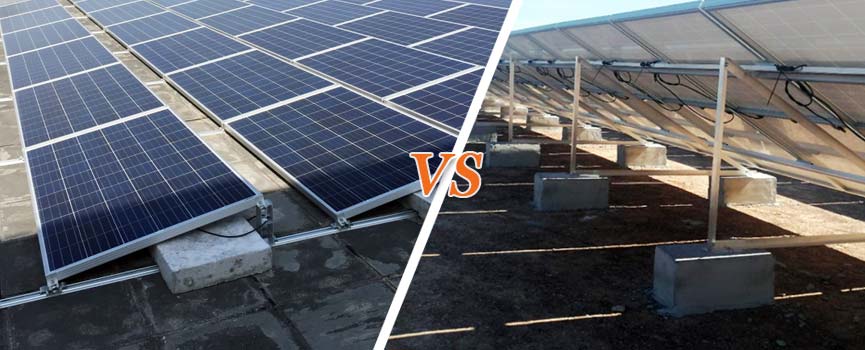
Choosing between a ballasted or ground-mounted system for your solar panels involves understanding the distinct approaches each takes to securing the panels, positioning them for sunlight capture, and utilizing available land. These factors influence both the energy your system generates and the cost of installation.
Ballasted mounts offer a solution for rooftops where drilling or penetration is not feasible. They rely on weights to secure the panels, eliminating the need for anchors. Ground-mounted systems, conversely, provide adaptability. They can be situated and angled to take full advantage of the sun's path across the sky.
Panel angle plays a significant role in energy production. Ballasted mounts typically have fixed tilts, limiting their ability to adapt to seasonal variations in the sun's position. Ground-mounted systems offer greater flexibility, allowing adjustments to optimize energy capture throughout the year.
Land usage considerations also come into play. Installing a ground-mounted system may involve navigating local regulations concerning setbacks, permitting processes, and environmental impact assessments.
Finally, Designing both mounting systems requires considering their ability to adapt to environmental factors. Wind, snow, and seismic activity all present potential challenges that must be factored into the design process, taking into account the specific geographic location.
Final Words
Solar installations involve various complexities, so work closely with your solar engineer, contractor, roofer, and utility provider to ensure your solar system, whether ballasted or not, is set up correctly. Employing an experienced project manager is often essential to manage these details effectively. For commercial buildings, ballasted solar racking frequently emerges as the preferred option due to its ability to minimize risks and maintain optimal performance throughout the lifespan of your solar energy system.
